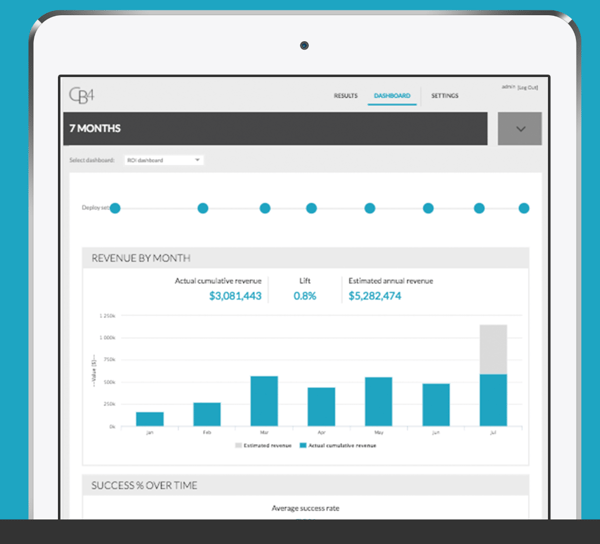
Even if you don’t love shopping, there’s probably been a store you’ve walked inside that made you feel instantly at ease, or maybe intrigued enough to explore.
Odds are, that feeling you experienced wasn’t an accident. While there is a certain appeal to an old used bookstore — its aisles meandering through towers of books — shopping at many retail stores today is a highly curated experience designed to move you around the store and make as many purchases as possible.
Some of these tactics are subtle and some are meant to hit you over the head like a brick. There is an entire arsenal of psychological and physical tricks to make customers want more, and to want to buy more. If you’re a retailer, you might be aware of these tactics, or you might not.
You could take a page from e-commerce giant Amazon, which is putting its prodigious stores of data to use in the brick and mortar space with retail experiments such as cashierless Amazon Go stores. But more likely, you simply want to optimize your existing storefront. Always remember, in retail, data is king. And that goes for retail merchandising, too.
Retail merchandising is the practice of utilizing strategies to increase retail sales by consumers. This covers advertising, store layouts, product displays and free samples within stores.
If you use software to help run your retail business, you are collecting data. And that data is the key to successful retail merchandising. It tells you who your customers are, what they love, what motivated them to become customers and why they remain loyal. Obviously, it isn’t always so cut and dried. You need tools to turn this data into usable insights.
Luckily, there are a number of tools available to help you do that.
There is no one-size-fits-all software solution. If there were, there wouldn’t be literally tens of thousands of programs out there. (For perspective, there are about 85,000 products listed on G2, with more being added every day.)
If you’d like to step up your retail merchandising game, you’ll likely need a variety of software programs. Products featured in this post are listed in a category new to our platform as of March 25, 2019 and have relatively fewer reviews than others. We chose products with the most detailed information available if they do not yet have reviews. Products with reviews are chosen based on their high user satisfaction scores.
Retail operations software is built to improve a brick-and-mortar business’ daily operations and sales by providing actionable insights based on data. These data typically come from other software tools used to run the business, such as point of sale (POS) systems and inventory control software. Insights typically involve inventory, customer demographics and store layout. For merchandisers, knowing the optimal way to organize inventory in a store, and which products are most successful, can drive sales company-wide.
CB4 utilizes POS data to detect problems and potential issues with store inventory.
 Image courtesy of CB4
Image courtesy of CB4
CB4 uses up-to-the-moment predictive analytics to recommend operational changes to improve store performance. The tool can uncover issues such as pricing mismatches, out-of-stock items, inventory discrepancies and poor retail merchandising.
JDA Merchandise Management System is a large-scale tool to boost operational performance by improving inventory availability, adjusting pricing, creating marketing promotions and optimizing inventory storage and delivery. Obtaining the correct inventory and ensuring it’s properly priced is an important part of retail merchandising. With the ability to process thousands of POS transactions, JDA Merchandise Management System can analyze daily transactions and transform that information into usable inventory insights.
Retail analytics software is built to leverage a retail business’ data to improve performance, customer experience and marketing strategies through reports and insights. These data are collected by software the business is already using, and reports can be created either in real time or on demand. Data holds the key to a retailer’s success, so using insights provided by retail analytics software can help increase profit by minimizing cost and targeting the right customers at the right time. Merchandisers can use this data to place items commonly bought together near each other on shelves, place popular items in areas more easily seen, and target marketing efforts to specific demographics.
42 is a business intelligence software program specifically for retailers.
 Image courtesy of 42
Image courtesy of 42
Using data from a variety of sources, the platform provides real-time insights and reporting, consolidated and validated data and drilled-down analysis of all this information. This data can be used by merchandisers, buyers, planners, executives and tech teams for both digital and physical storefronts.
What users say
“42 allows us to see all our data in one place. No more merging huge spreadsheets of data in order to produce the most basic reports. The user interface is very accessible and it's saved our retail teams heaps of time in having self-service access to the information they need to make informed commercial decisions. The application itself is adaptive to mobile too, so it makes it even better at getting a top-level snapshot of how a particular unit, category, store or region is performing by the hour.”
— 42 review by Jonathan H.
Personali is an artificial intelligence platform that collects customer data to help a retailer improve customer experience and customer loyalty.

Image courtesy of Personali
Insights from Personali can help retailers create targeted promotions to increase conversion, improve customer loyalty with personalized incentives and provide a seamless customer experience on- and offline.
What users say
“We saved our business enormous amounts of time doing data science to improve our customers' UX. With Personali, not only is our time use massively improved. Our productivity went up. Our profitability went significantly up. Our users give us rave reviews online and by word of mouth. They absolutely love the improved experience of shopping on our e-commerce site.”
— Personali review
Retail assortment management applications help retailers optimize their merchandising process in an omnichannel world. “Product assortment” describes the variety of products offered by a retailer. Retail assortment management applications digest a business’ data and produce information about how a retailer’s assortment can be improved. This information may also include pricing information, market intelligence and inventory management insights.
BOARD provides retailers with business intelligence, performance management and analytics all in one platform. Together these features create an all-in-one decision-making platform to help retailers budget, plan and forecast.
Ideal for enterprise companies, BOARD can provide a retail company’s corporate office with high-level insights for the whole business. Using these insights, the company can make smarter marketing, purchasing and pricing choices.
What users like
“BOARD allows my company to go one step closer on being a smart company. It helps us analyze data and generate them into reports, it also helps to speed up several processes which were all done manually in the past. It really cuts down on the manpower which we required in the past.”
— BOARD review by Marco F.
Since both parties have something to gain, retailers and suppliers often collaborate to draw up agreements on how retail merchandising processes will be executed. More often than not, however, it’s the supplier brands who are left accountable for making sure the plan is being carried out correctly.
Let’s take a look at how some top consumer goods companies are nailing their retail merchandising.
No matter how hard a retail merchandising rep has worked to cultivate relationships with store management, promotions and other in-store sales programs can go by the wayside as the retailer is burdened with demands coming at them from all angles. The field sales team at Kraft Heinz doesn't leave the success their retail merchandising programs up to chance. Instead, the team at this food and beverage giant relies heavily on data to ensure proper execution.
Instead of just telling a particular retailer account about a slip up, the Kraft Heinz team shows the retailer. The team does this by carefully auditing their stores where promotions are scheduled to take place, and presenting their findings upon each store visit. Armed with data in-hand, reps are able to prove that the retailer is not upholding their end of the agreement, and in turn missing out on potential sales.
Since implementing this process change, the Kraft Heinz team has been able to boost retailer compliance by 80%, leading to a 25% sales lift!
Most suppliers keenly desire additional facings on the shelf, but few are fortunate enough to receive them. Daiya Foods are purveyors of vegan dairy products, making it difficult for traditional retailers to understand their value proposition. The company also uses data to their advantage to make the case for receiving additional facings.
Besides the plant-based boom in the food and beverage space, Daiya needs to give retailers a reason for why their brand should be allowed to invade the dairy aisle. Similarly to Kraft Heinz, data is their weapon of choice for getting this job done. The team utilizes metrics around growth and velocity to catch retailers’ attention, and ultimately close the deal. The strategy seems to have paid off for Daiya, who was acquired for over $300 million dollars in 2017.
While a data-driven approach is certainly advantageous for retail merchandising success, sometimes a little creativity can be just as powerful. EVOLUTION_18 is a wellness brand spearheaded by cosmetics industry legend Bobbi Brown. Capitalizing on its founder’s industry expertise, the brand chooses to position itself in the category most aligned with her other ventures.
Despite an ingestible product line that’s made up of powders, shots, and capsules, EVOLUTION_18 is sold in the beauty department of the nation’s largest retailer, rather than alongside traditional supplements. Moreover, it’s accentuated with an eye-catching endcap display, further solidifying the brand’s place in the category.
Brand managers were thoughtful about this placement strategy, understanding that beauty shoppers are probably familiar with Bobbi Brown’s other businesses whereas supplement shoppers might not be, making it easier to win the sale. The atypical placement seems to have paid off, with the brand citing that certain products soon sold out after implementing the display.
When it comes to running a successful retail business, retail merchandising is just one piece of the puzzle. Whether you hope to improve in-store merchandising or e-commerce merchandising, in-store marketing or targeted consumer marketing, inventory tracking or inventory management, this software can provide you a jumping-off point.
For more on retail, check out 2019 Retail Trends: E-Shopping and Omnichannel Bring Disruption and Innovation.
Lauren is a former market research analyst focusing on the e-commerce and retail industries. Since joining G2 in July 2017, she has focused her energy on consumer-driven spaces after spending time in the vertical, design, and CAD software spheres. She graduated from the University of Chicago with a degree in English language and literature and her writing and research has been cited in publications such as Forbes, Eater, and Nasdaq.com, among others. She enjoys building and sharing her knowledge, and in her free time enjoys reading, knitting, and gaming. Her coverage areas include retail technology, e-commerce, and restaurant technology.
If you’re a small-business owner, you’ve probably looked at sites like Amazon and eBay and...
 by Lauren Fram
by Lauren Fram
You don’t need me to tell you mobile phones are everywhere. You may be reading this on your...
 by Lauren Fram
by Lauren Fram
Online shopping is almost ubiquitous. Nearly every major brand has an online store, and many a...
 by Lauren Fram
by Lauren Fram
If you’re a small-business owner, you’ve probably looked at sites like Amazon and eBay and...
 by Lauren Fram
by Lauren Fram
You don’t need me to tell you mobile phones are everywhere. You may be reading this on your...
 by Lauren Fram
by Lauren Fram


